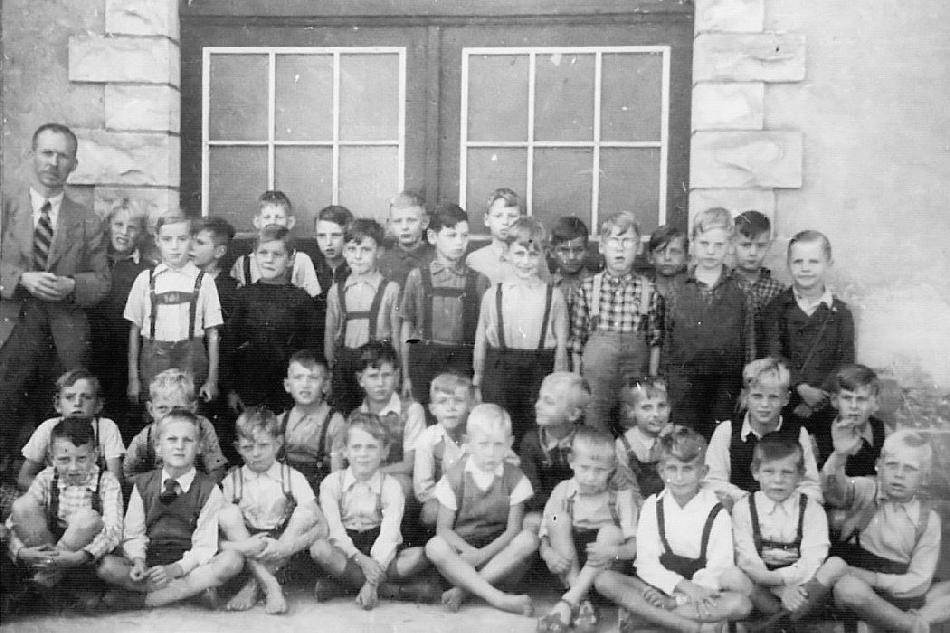
World War II Displaced Children: Causes--Aerial Bombing

Figure 1.--These children were from Bremn and Hamburg, two coastal cities heavily bbombed by the llies in 1943. They apparently were still in the citie at tge time of the bombing. Some may not hve lostboth parents because theirc fahrs maybhave been at the front. The photo was taken in 1943 at a home for displaced children in Ulberndorf, a village in Saxony.
|
|
The public fears in the unter-Wae era camecto fruition the first day of WotldcWar II when thecGerman Luftwaffe began bombing Polish cities (September 1939). The Japanee had already begun nombing Chinee cities and the Germans and Italians had unleased their airforces on Spanish cities. SEspite the concrn with aerial bombardment, few bomb shelters were built for civilians. Polish civlians had virtually no shelters or protective air cober. And the same was true of the Dutch, Belgians and French when the Germans struck in the West (May 1940). The British sprung their Home Chain Network on the Germans. This assusted the RAF, but civilans at first had to make do with home shelters. There were few prepared, public shelters. The British Government evn tried to prevnt civilians from using the Underground stations. The basic defense of Londoners was the fact that London was so spred oit with single family homes. It took an emense amount of bombing to casuse many casualtie except in h=densely populated areas likecthe East End. The British moved the children out ofvthe city, so most were safe, but their parents stated in London so quite a number of children lost thir parents in thevombing or their fthers in the service. The Luftwaffe was tacticalnground support force. It's light and mwdium bombers were not well suited for straregic bombing. The Allies )British nd Americans), however, built massive stratehic bombing forces ideally suited to bomb Germany. When the War turned against the Germans, it was German children that began to lose their parents. The greater industrial capacity of the Allies meant that a far greater strategic bombing campaign was launched against Germany. German civilians had access to the best public sheters of tge War, They needed them. As the intensity of the Allied bomving increased, the Germns also sent their children into the city. This meant that many children lost their parents in thecur raids or theirvfathers as war casulties or prisoners of War (POWs). Few Grman POWS ever returned from Soviert camps. And those that did returned several years after the War. Japan considered itself safe from strategic bombing because at the time it launched the War, no bomber had the range to reach Japan. This changed with r=the development of the B-29. Intul runs proved sisappointing, nut by 1945 the B-29s began hitting Japan wood and paper cities. The Japnese also moved their children in the countryside. Tge carnage in the cities was terrible, leaving many war orphans.
CIH

Navigate the CIH World War II Sections:
[Return to World War II displaced children: Causes]
[Return to Main World War II displaced children page]
[Return to Main Post-War World War II displaced children page]
[Return to Main World War II aftermath page]
[Biographies]
[Campaigns]
[Children]
[Countries]
[Deciding factors]
[Diplomacy]
[Geo-political crisis]
[Economics]
[Home front]
[Intelligence]
[POWs]
[Resistance]
[Race]
[Refugees]
[Technology]
[Bibliographies]
[Contributions]
[FAQs]
[Images]
[Links]
[Registration]
[Tools]
[Return to Main World War II page]
[Return to Main war essay page]
Created: 3:44 PM 1/9/2015
Last updated: 3:44 PM 1/9/2015



